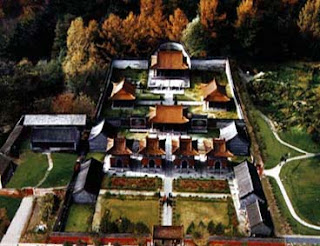Chinese Name: 锦州市 (jǐn zhōu shì)
Population: 3,071,000
Area: 10,300 square kilometers (3,977square miles)
Nationalities: Han
Administrative Division: 3 districts (Taihe, Guta, Linghe); 2 counties (Heishan, Yixian); 2 county-level cities (Linghai, Beizhen)
Seat of the City Government: 68, Shifu Lu, Taihe District
Useful Telephone Numbers: Tourist Complaints: 0416-3872060
Weather Forecast: 121
Zip Code Inquiry: 184
Bank of China Jinzhou Branch: 25, fifth section of Jiefang Lu, Linghe District
China Post Jinzhou Branch: 4, fourth section of Yan'an Lu, Linghe District
Location: Located in the southwest of Liaoning Province, Jinzhou City neighbors Shenyang in the east and Huludao in the west. It reclines along the Songling Mountains in the north and is facing the Liaodong Bay of the Bohai Sea in the south.
History: During the Spring and Autumn Period (770BC-476BC) and Warring Stated Period (476BC-221BC), this area belonged to the Yan Kingdom. In the Qin (221BC-206BC) and Han (206BC-220AD) dynasties, it was included in the shires, or tributaries, in present Liaoning. The name of Jinzhou was initiated in the Liao Dynasty (916-1125).
Physical Features: The terrain here is inclined from the northwest to the southeast. In the northwest and northeast of the city stand the Songling Mountains and Yiwulu Mountains. Southward to the coastal plain area, the average altitude drops to 20 meters (66 feet) or, even lower.
Climate: The area enjoys a temperate, monsoon climate at middle latitudes. Differences in temperature vary greatly during the whole year. It has distinct four seasons with an average temperature of around 8-9 degrees centigrade (46.4-48.2 degrees Fahrenheit)
When to Go: Considering the weather, April to October is the golden season for a visit, while to see the fascinating snowscape and folk festivals, January to February is the best period for traveling.
Special Local Products: dried bean curd, smoked chicken, Lingchuan White Wine, sea food of Bohai Bay
Local Highlights: Every year, many Buddhist along with unique folk activities will be held in the North Putuo Mountain (a sacred Buddhist mountain connected with the South Putuo Mountain in Zhejiang), attracting numerous travelers and pilgrims from near and far.
Attractions
Wenya Museum (文雅博物馆; Wényǎbówùguǎn). Set up by the amateur collector Du Wenya, this museum houses an impressive collection of fossils found in the local region, some fossils having been found nowhere else.
Bijia Mountain (笔架山; Bǐjiàshān), (30 min S of Jinzhou). Connects to the mainland via an isthmus at low tide and is more of a big hill than a mountain. There are numerous small Buddha temples on the hill and vendors selling various souvenirs and snacks. Is well worth the trip. If you have the time, take a boat out to the hill, walk around for several hours visiting the temples, and then walk on the land bridge back to shore when low tide comes.
Guta Park (古塔公园; Gǔtǎgōngyuán). A quiet park in the south eastern part of the city featuring the Guangji Pagoda. The 72 m (236 ft) tower is a beautiful Liao style pagoda, with thirteen levels in an octagonal shape.
For more information, please visit www.top-chinatour.com














































